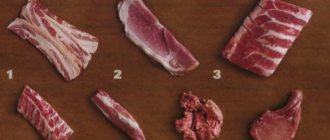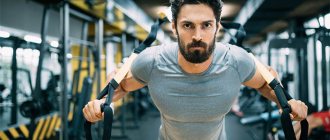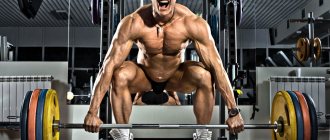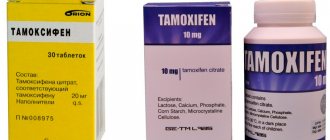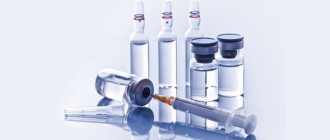Fitness and bodybuilding Anatomy
You, of course, understand that the topic of “muscle growth” is the topic of not just one article, but an entire book. However, especially for you, we chose the most interesting and useful, condensed this information, and wrote an article, guided by which, you can correctly design your workout. If you have just begun to take your first steps in bodybuilding, then start them by reading this article.
Which training program should I focus on?
World-famous bodybuilders, who more than once took the highest places for their achievements, had their own training programs, which were radically different from each other. Sergio Oliva worked out in the gym for about two hours, as he only recognized volume training. Short classes were to the taste of Dorian Yates, who placed the main emphasis on “refusal”. In turn, Ronnie Coleman was categorically against “failure” sessions, and insisted that the muscles should be “punched” using a large number of sets. Jay Cutler had the same long workouts as Oliva, but he emphasized comfortable weights, working with them for 12-20 repetitions.
Why, using fundamentally different approaches, did these athletes consistently achieve their goal? Which workout is optimal? How much time do you need per session and rest between sets? What amplitude should you use when performing the exercise? All these and many other questions will remain unanswered if you don’t first understand what increases muscle volume depends on.
Effect of growth hormone on the body
For men involved in bodybuilding, the anabolic effect of somatotropin is of greatest interest. The hormone causes active muscle growth, allowing you to achieve the desired relief and volume. At the same time, it accelerates wound healing, which reduces injuries during sports training and helps reduce fat deposits. A significant advantage for bodybuilders is the anti-catabolic effect of somatotropin, which inhibits muscle destruction.
And these are not the only beneficial properties of the hormone, since it:
- has a rejuvenating effect;
- regulates energy distribution processes;
- stimulates the growth of internal organs, compensating for their age-related atrophy;
- increases blood glucose levels, strengthens the immune system;
- promotes the growth and strengthening of bone tissue (when taken up to 26 years).
It is noteworthy that the first somatotropin preparations were made based on extracts from the pituitary gland of corpses, and only in 1981 they began to be produced synthetically. In professional sports, the use of somatotropic hormone is prohibited, but in bodybuilding it is actively used by men to build muscle mass. It is worth considering that GH does not contribute to the growth of strength indicators, so it is pointless to take it in powerlifting as a means of increasing performance. It does not affect endurance either.
The main parameters affecting the volume of your muscles
Muscle volume is determined by the number of muscle fibers that make up the muscle and their cross-section. However, different people have different muscles, so three main classes of muscle fiber distribution have been identified: l, lla, llb.
Types lla and llb have some similarities, while the first and second types are significantly different. This difference, first of all, lies in the different speed of contraction - fibers of the first type belong to the category of slow-twitch muscles, the second type - to fast-twitch muscles.
In addition to structural differences, the volume of muscle fibers is affected by the amount of sarcoplasm, which fills the space between the structural elements of the fibers - myofibrils. Sarcoplasm contains a certain amount of glycogen; per 100 g of muscle tissue there is from 3 to 5 g of glycogen. In turn, 1 g of glycogen can hold 2.5 g of water. Glycogen storage by muscles is a trainable parameter.
Muscle fibers are combined into bundles and “packed” into fascia. Hard fascial walls will prevent rapid muscle growth, as well as insufficient blood supply, which is determined by the branching of the capillary network. Again, these two parameters can also be trained.
To summarize all of the above, we can note the main parameters affecting muscle volume
:
- Muscle fiber thickness (cross section).
- Type of muscle fiber (l, lla or llb).
- Number of muscle fibers.
- Elasticity of the fascia enveloping bundles of muscle fibers.
- Cross section of blood vessels and their number.
- The amount of sarcoplasm.
All of the above factors can be changed through regular training, but there are also less obvious relationships that should be considered. This relationship represents the interaction between the central nervous system and muscles, as well as hormonal levels, metabolic levels, joints and ligaments.
Collecting all these parameters together and analyzing them as a whole, a complex and contradictory system is obtained, since different factors sometimes require different mutually exclusive approaches. It is for this reason that we can assume that any of the proposed programs will give a certain result, however, without timely changes in training, you will face not progress, but stagnation.
Disadvantages of being tall
Tall athletes can be ectomorphs, endomorphs, and even mesomorphs. What they have in common is the presence of long limbs - levers that make it very difficult to use large weights in exercises used to gain muscle mass. First of all, this is the classic “triad” - squats, bench press and deadlift, where the shorter the “lever” and, therefore, the path that the projectile must travel, the better.
It is for this reason that in powerlifting, for example, there are practically no very tall guys, but in strongman, where the requirements are somewhat different, there are just a lot of tall guys. But now we are not talking about “strongs,” but about those gym-goers who come to it for muscles.
So, the first disadvantage is long limbs, or “levers”. The second is the long bellies of almost all muscles, and it is known that the shorter the belly of a muscle, the easier it is to make this muscle look convex. In general, whatever one may say, it is impossible to classify even those tall guys who are mesomorphs as “genetic monsters”. What can we say about the rest...
As you understand, within the framework of this article there is no point in talking about nutritional features, and the training process for people of different body types will be different. But there are several general rules in the training that must be strictly observed by all tall people, regardless of their build type. We will focus on these rules.
Powerlifting and bodybuilding
The training can have two different variations: the training takes place either according to a “builder” program, or according to a program that is used in powerlifting. In this case, bodybuilding training includes exercises in which 8–12 repetitions are done, and the weight of the weight is selected at the rate of 70% of the maximum squeezed by the athlete (RM). Rest between sets in bodybuilding is a minute to a minute and a half. A striking manifestation of bodybuilding is considered to be pumping, when the weight of the weight is reduced to 50–60% of the maximum weight available to the athlete, and the number of repetitions varies between 15–20 times, or even more. Rest during pumping is 30–40 seconds.
In powerlifting, the approach is somewhat different, it involves exercises of only 3–8 repetitions, weight 80–85% of RM, sometimes even 90 or 100% of the athlete’s one-time maximum. Between sets there is a break of 5-6 minutes.
Now we will not consider such a concept as “pharmacological assistance”; we will devote a separate section to this issue; this is done in order to better understand the biochemical reactions that occur in the muscles. And once you understand what processes are activated in your body during training, you can direct these processes in the direction you want.
To begin with, the training of a bodybuilder differs from the training of a powerlifter due to a different hormonal response. By reducing the breaks between sets and creating a more intense training schedule, you stimulate the release of growth hormone into the blood and an increase in testosterone levels. This is what bodybuilding is counting on. There are special techniques such as supersets, trisets, drop sets, “burning”, which provoke the body to intensively secrete growth hormones. Pumping gives the greatest effect.
There are no such goals in powerlifting; on the contrary, during training, testosterone can decrease, while the concentration of cortisol in the blood increases. These processes do not take much time; immediately after training, testosterone returns to normal, at first even slightly increasing its level relative to the initial state. In this case, training has a beneficial effect on protein synthesis.
The main advantage of the “bodybuilding” method is the ability to train more often. Unlike “powerlifting” workouts, which load the central nervous system, “bodybuilding” workouts practically do not tire it. High frequency of training, in turn, has a positive effect on muscle growth.
It is also interesting that after training in a powerlifting program, a rested athlete may feel great, however, he may not realize that his nervous system still needs time to recover. The central nervous system recovers completely only after 7–8 days.
Even though these two programs are completely different and adhere to different principles, bodybuilders also need powerlifting training. First of all, this is necessary to involve the central nervous system and all muscle fibers in the work.
When lifting heavy weights—dumbbells or barbells—more muscle fibers are recruited. At the same time, in order to complete the necessary work even with the necessary resources, you need to have a well-functioning mechanism of brain-muscle interaction. Without this relationship, the brain simply will not give the muscles the necessary command, and they, in turn, will not be able to cope with the work of lifting a given weight.
According to scientific research, the average gym goer only uses a third of their muscle fibers.
This is why powerlifting training can be useful for other athletes: it allows you to teach the brain to quickly respond to heavy loads by “involving” more muscles. There is no need to resort to traditional powerlifting, you can follow the path proposed by Scott Abel, who well recommended the 6x6 method, which was later changed by bodybuilders to the 5x5 method. As an alternative, you can use power pumping or “negatives”.
The ability to involve the required number of muscle fibers in training is not all the “advantages” that powerlifting can provide. In addition, the involvement of a larger number of muscle fibers can be achieved by using drop sets.
The role of growth hormone in bodybuilding
Peptides are substances consisting of short chains of amino acid residues connected by peptide bonds. Peptide hormones work in the body at the cellular level and are responsible for the functions of an overwhelming number of organs and systems. Peptide compounds are widely used in the sports environment for the production of drugs that increase muscle mass and strength, as well as reduce the percentage of adipose tissue.
Growth hormone is used in bodybuilding for the same reason. Peptide-based drugs demonstrate high efficiency. They are considered especially beneficial for people over 45 years of age, as they further reduce the signs of aging in the body.
Neotropin, 10 units/bottle (10 bottles) Growth hormone and peptides
Neo Laboratories Co., Ltd. (China)
Neotropin - lyophilized powder in bottles of 10 units. Attention: Currently, counterfeits of the original drug have appeared. Unscrupulous sellers also use similar...
To favorites
Compare
8 reviews
4.9
- Efficiency 4.9
- Price quality
4.9 - Compound
5.0 - Design
5.0
8,200 rub.
Buy
1 pcs available
Initially, growth hormone was used only in medicine. Due to its ability to increase muscle mass and reduce fat, it quickly became widespread in sports. But it is worth noting that the maximum result from the use of peptides is achieved with nutritious meals up to 5 times a day with a high content of proteins and carbohydrates and intense strength training.
How does growth hormone specifically affect the body:
- Causes muscle growth (anabolic effect).
- Inhibits the process of muscle destruction (catabolic effect).
- Reduces the percentage of body fat.
- Has a rejuvenating effect.
- Stimulates the growth of organs that gradually atrophy with age.
- Enhances bone growth in people under 26 years of age.
The effect of growth hormone on the body is also to accelerate wound healing and generally strengthen the immune system. Some of the effects are exerted directly by somatotropin, while others are mediated by IGF-1, with which the actions of growth hormone are very closely related.
The main reason for the popularity of HGH is its ability to reduce the volume of subcutaneous fat. Therefore, growth hormone is used during drying, which aims to obtain pronounced relief. Due to large fat losses, a person’s weight increases slightly during a month of HGH course – by 3-4 kg.
We recommend:
- “Drying for men, part 1: example of a diet for a week.”
- “Gym drying for men, part 2: weekly training program.”
- "Cutting for Men, Part 3: Sports Nutrition for Cutting."
The benefits of using growth hormone include:
- no effect on the functions of the reproductive system;
- low incidence of side effects;
- high efficiency;
- lack of androgenic effects.
Disadvantages of growth hormone drugs
The disadvantage of growth hormone drugs is their high cost. In addition, they are often tried to be counterfeited, so there is a possibility of stumbling upon a fake.
Even before taking such serious drugs, it is worth getting tested for growth hormone and consulting with a specialist. Somatotropin has serious side effects:
- muscle pain, arthritis symptoms;
- swelling of the limbs;
- hypertension;
- headache;
- increase in the volume of internal organs;
- hyperglycemia (increased blood sugar) and diabetes.
To avoid side effects, somatropin should be used strictly according to the instructions, and injections should be done by an experienced doctor. A clear sign of an overdose is pain.
How to achieve muscle hypertrophy and hyperplasia?
The powerlifting program promotes hypertrophy of muscle tissue in greater volumes than bodybuilding. An analysis of the muscle tissue of athletes involved in powerlifting and bodybuilding showed that powerlifters have thicker muscle fibers than bodybuilders, while representatives of bodybuilding have a larger number of fibers. To some extent, this is explained by the difference in hormonal levels that occur during training. And, as it turned out during the same studies, such qualitative differences in muscle fibers among athletes are far from the most interesting.
It turns out that the cross-sectional area of the fibers of bodybuilders is approximately the same as that of people who do not train in the gym. The most successful representatives of bodybuilding, so to speak, its elite, took part in the experiment. While the thickness of the muscle fibers of elite athletes was average for the average person, their number was significantly higher than the average.
A fundamentally different approach to training, and, as a result, the presence of a different hormonal response, is what led to such a colossal difference in the thickness and number of muscle fibers between bodybuilders and powerlifters. Going into detail, we can say that growth hormone, and in particular insulin-like growth factor (IGF-1), had a huge impact on muscle hyperplasia.
What does this training information tell us? First of all, this is an understanding of the benefits of combining these completely different approaches - “powerlifting” and “building”. And if bodybuilding provides a quantitative increase in muscle mass, then powerlifting helps to increase the volume of each individual fiber.
A very interesting fact is the fact that the maximum thickness of muscle fiber is achieved in approximately 2 years. You may think that you should immediately increase the number of fibers, which will take a couple of months, and then work on thickening them. But it's not that simple. For best results, it is necessary to combine both methods, periodically paying special attention to one or the other method of training. This can be reduced to one or two days, which you devote to labor-intensive work with basic exercises, while the rest of the time can be devoted to volume training.
Another option is to completely combine these different training programs. The most successful, and therefore the most popular program is “10x3”. In this case, there are three approaches for one out of ten sets. The weight of the weight is taken to be 80–85% of the maximum that the athlete can handle. Breaks last up to 1 minute, or even less.
The “rest-pause” method continued its existence in a new interesting technique “clusters”. The essence of the method is to perform “singles”, between which there is a break of 20–30 seconds. The weight is 90% RM. The number of “singles” is approximately 10.
What we talked about earlier can be attributed to the ideal picture, when the action is carried out by “fast” fibers. “Slow” muscle fibers are limited in growth. Let's say even more, fibers that contract slowly are not prone to hyperplasia. It is this type of fiber that includes such a large and important muscle for a bodybuilder as the quadriceps. In this case, athletes can only use monotonous “slotting” with light weights, which requires a colossal number of repetitions - 100 or more.
It turns out that large weights are left out of work? As it turns out, no. When working with light weights, “fast” fibers are practically not included in the workout, but with heavy loads, “slow” fibers are involved. But with small loads, the “fast” fibers are susceptible to hyperplasia.
It is also interesting how the process of hyperplasia occurs. All newly formed fibers will belong to the llb group, and only from them, under the influence of repeated load, will type lla tissues be formed. When information about these processes was received, bodybuilders faced a logical question: do they need to devote special time to working out fibers that belong to the llb type?
While we do not have a definite answer, however, many are inclined to believe that such training will not hurt. It takes about six weeks for fibers from type llb to move into lla fibers, so you will still have some “explosive” fibers left. Moreover, the llb type fibers, which are thicker, provide additional benefits to the new type of fibers formed from them.
In order to increase the hypertrophy of type LLB muscle tissue, a special training method is needed - plyometrics. This includes exercises with jumping, jumping on a step, push-ups with clapping, as well as exercises on the bar and “explosive” pull-ups and presses, rows, and curls. Exercises can be performed either with your own weight or with additional weights. When working with weights, its weight must be selected at the rate of 45–50% of RM. The pace throughout the exercise should be as high as possible.
Muscle growth in questions and answers[edit | edit code]
Question:
Why immediately the own weight? Why can't I use weights and machines to build muscle?
Answer:
You can. You can easily apply the concepts and principles while working with weights or machines. You can use sandbags or stacks of bricks to train your muscles - the choice is yours. It’s just that the RCC organization is engaged in bodyweight training. If you really want to train with external weights, the best book on old-school functional strength techniques is The Encyclopedia of Underground Strength and Conditioning, written by a great guy, Zach Even-Ash.
Question:
As I understand it, pull-ups with a direct and reverse grip are the main exercises for developing the latissimus dorsi and biceps muscles. Unfortunately, I can't do pull-ups yet. Should I use resistance bands for pull-ups?
Answer:
Athletes were able to achieve pull-up shape thousands of years before the invention of rubber bands. You don't need them either. If you're not strong enough to do regular pull-ups, why not try Australian pull-ups? Watch an unrivaled video tutorial from our advanced instructor Al Kavadlo: https:// www.alkavadlo.com/2010/01/07/all-about-australian-pull-ups.
Over time, Australian pull-ups can be made more difficult, as Al does.
Australian pull-ups are horizontal movements, but you can also consistently build strength by performing vertical pulling movements. If you're almost ready to do pull-ups, how about doing jackknife pull-ups? When doing jackknife pull-ups, you stand on a box and use your heels to help you pull upward. If you do these movements, you won't need bands.
Question:
When I look at gymnasts, I have no doubt that progressive calisthenics techniques help to significantly develop the muscles of the upper body. But what about the legs? Won't they look like sticks?
Answer:
No, there are many techniques for training legs using your own weight (Training specific muscle groups with your own weight). It's sad but true: most guys who go to leg training are either useless fatties or squishy theorists who have never tried bodyweight techniques. As soon as you do two sets of proper single-leg squats, the same number of bridge racks, and then jump 60 cm in height, you will come and tell me that consistent gymnastics is not effective for your legs.
Question:
What exercises are included in the abbreviated program for a complete beginner? What exercises are most necessary to train all muscle groups?
Answer:
For a complete beginner? Pull-ups, push-ups, squats, leg raises. As you get stronger, change the angle, position, and perform a bridge stance. As soon as you get used to the exercises again, do additional ones; Try horizontal pulling movements like the Australian pull-up or front crocodile stance.
Question:
“Core” bodyweight exercises like push-ups and pull-ups work the big muscles of the body (chest, wings, biceps, etc.), but what about the small muscles that are also important for a bodybuilder? What about forearms, calves, neck muscles?
Answer:
The forearms are worked on, among other exercises, by hanging and successive push-ups on the fingers. The calf muscles are trained with standing and seated calf raises, and both of these exercises can be performed sequentially, ending with a series of explosive jumps. Consistent wrestling bridges and neck bridges help you build a larger, more functional neck that you won't get with weights. There are no muscles or muscle groups that can be trained with weights or exercise machines that cannot be worked, and more effectively, with the help of your own weight. You just need to know how to do it.
Question:
I was told that if I wanted to get stronger and gain muscle mass, I needed to use a weight vest for push-ups and pull-ups. This is true?
Answer:
No, you don't need a vest. In fact, weight vests not only do not help athletes, but even hinder them. Instead of progressing from the exercises they are currently performing to a higher level, athletes using weight vests simply stick to the vests and perform the same exercise, while their potential remains untapped and their skills do not develop because they do not move on to new, more complex techniques. Vests are also bad for your shape - maybe to a minor extent, but still.
However, many coaches disagree. If you want to play around with a vest, go ahead! You'll probably have a lot of fun.
Question:
Are bodyweight exercises suitable for women? Are there any known women who have reached the master level described in The Training Zone?
Answer:
Women cannot gain muscle size as quickly as men due to low testosterone levels. However, this does not mean that they cannot become strong in any way! Undoubtedly, the female body reacts to consistent gymnastics in the same way as the male body. There are a number of reasons for this. Some of this is due to the fact that consistent gymnastics involves developing strength proportional to weight, and women tend to weigh less than their counterparts with stubble. Some are associated with the natural flexibility of women's joints (which also increases during pregnancy). Many have a simple aesthetic: women are usually more inclined to move their bodies (dance, gymnastics) than to work with big, ugly, rusty dumbbells.
At the moment, many women are applying for the master level. Lillian Leitzel (born in the 1990s) was an acrobat in Barnum's circus and could do 30 pull-ups on one arm at a time. The 19th century Welsh strongwoman Vulcana is said to have been able to do one-arm push-ups. (At the age of 13, she caught and subdued a runaway stallion!) So the door to the world of strength sports is open for women.
Question:
I'm serious about growing - not only gaining muscle mass, but also adding weight. Can consistent gymnastics help you grow?
Answer:
Not only can it, I myself have witnessed such cases many times. In the old days, there was even a special sub-discipline of progressive gymnastics dedicated to growth. This was considered as important as muscle growth. Why the hell not? Experience shows that height can be maintained and even increased over time by several centimeters (or even more). Here are the main points.
- Don't put pressure on your spine. Do not try to regularly perform loaded squats, deadlifts, barbell squats, etc. Also, do not overuse running or jumping.
- Watch your posture every day. Keep your back straight (imagine that there is a cord tied to your head that is being pulled upward), and your chest slightly arched forward and pulled up.
- Train your intervertebral discs: keep them healthy and strong - do the bridge stance every day!
- Extend your back after the “bridge” and perform bends.
- Maximum height requires strong bones, and strong bones require calcium. There's no need to go overboard on supplements, but don't skimp on dairy if you want to optimize your growth.
Experts also recommend:
- standing position - emphasizes the height and vertical plane of the body;
- bending back for health/growth of back muscles/intervertebral discs;
- bending forward to stretch/decompress intervertebral discs;
- twists of the torso in order to relieve tension in the dorsal and thoracic regions;
- deep breathing technique to expand the chest.
Does this approach work? As men age, they lose about two centimeters in height. A compressed spine is shorter than a relaxed one. A simple hang is a great way to relax your back after an intense workout.
Question:
You said that dynamic isometric exercises help with gaining mass. I'm looking to build bigger shoulders, but the Training Zone book only provides a few static (isometric) exercises as early as the handstand push-up circuit. Could you please provide more examples of dynamic exercises that I could do to progress to handstand push-ups?
Answer:
Certainly. Remember that inversion exercises (performed upside down) provide good stress on the soft tissues of the shoulders and elbows. However, before you just think about doing inversion exercises, make sure you've been doing simple push-ups long enough to strengthen those areas. After this do:
- downward push-ups;
- Jackknife push-ups;
- Jackknife push-ups from a low platform (at knee level);
- push-ups in the “jackknife” position from a platform at the level of the hips, upper legs.
From here you can immediately move on to handstand push-ups against a wall. Another alternative is good old Marion push-ups. To perform them, you need to do push-ups in the position of “resting your feet against the wall” on straightened palms standing on the floor. Set a goal (let's say 10-15 reps at a time) and every time you reach the goal (good job, guy), raise your legs 2-3 cm higher. Mark your progress with chalk or pencil. Cheap, simple, and most importantly - effective if done correctly.
Question:
I've heard that adolescence is ideal for gaining muscle mass. Does it make sense to try to gain muscle mass after 40?
Answer:
This nonsense is complete crap. Modern views on age and strength development have been completely overturned by the advent of performance-enhancing drugs. Today's professional bodybuilders (and many other professional athletes, men and women) start doping in their teens and by the age of 40-50 their bodies are completely burned out. In the real (doping-free) world, teenagers typically have such a fast metabolism that it is incredibly difficult for them to build muscle mass. By the age of 40, metabolism drops significantly, while testosterone levels are at their peak. So, this is the golden time to gain muscle mass!
That's right, hellish power at 50 and 60 is not a problem. Many veteran strongmen could perform their terrifying feats at 80! Athletes of the modern era who are not on chemo should forget this nonsense fed to them by the modern, steroid-filled world of sports, and believe only in their commitment to the old school, the highest standards.
Question:
I injured my knee in the past. Can you give me some advice on how I can keep my joints healthy and gain muscle mass in my legs?
Answer:
A very, very frequently asked question. All athletes, regardless of age, should be attentive to the problem of maintaining knee health. Here are six things to remember to keep your knees healthy.
- Avoid heavy weights. Deep bodyweight and barbell squats are the norm at the moment, but I've talked to literally hundreds of older athletes doing heavy squats and they ALL have killer knees. Here's the answer: work with your weight.
- The depth of the exercise is the key to strengthening the ligaments. You need to support your weight on fully bent knees. Deep single-leg push-ups will make your knees feel like steel, but do them slowly!
- The biceps and calves also support the knee joint - not just the quads. Everyone needs to do the bridge stance for knee health, and guys with weak knees should love single-leg calf exercises!
- The knees are largely powered by synovial fluid. It circulates as you “open” the joint in a circular motion. Lift your leg off the floor and perform circular movements. (Never do this with your feet on the floor, as you see with martial artists. The knee is a hinge joint, so it is not designed to move in a circular motion under load.)
- Today people eat meat from the bone, but they disdain cartilage - and this is cartilaginous tissue. As a result, people today have bad cartilage. To fix this, they take all sorts of nasty things like glucosamine, which consists mainly of cartilage tissue. Eat cartilage as soon as possible if you want to strengthen your cartilage tissue!
- Fish oil seems to be really good for your knees.
Manohar Aich was born in Bangladesh in 1913. After nearly dying of black fever, Manohar recovered through consistent exercise, performing push-ups, pull-ups, squats and leg raises. According to his own calculations, he mainly gained his shape by working with his own weight and only when he was closer to 30 did he start working with weights. He never even touched steroids. In the photo he is 75 years old. At the time of writing, Manohar is over 100 years old and still practices every day. He last competed in bodybuilding when he was 90 years old. He is living proof that if you take care of your joints by doing consistent exercise and maintain your hormonal levels without resorting to steroids, you can gain muscle mass throughout your life
Question:
I'm pretty skinny, and I've always had a lot of trouble gaining weight—any kind of weight, even fat. I can hardly gain muscle mass. Which program should I follow?
Answer:
Believe it or not, the program you follow is not as important as the principles and lifestyle you follow. Here's what you need to do.
- Keep a diary. Work on a serious program like Hard Times. Start with one step less than you usually do and gradually increase the load every week - at least by one repetition. Push yourself to really work.
- At the end of your upper body exercises, do the parallel bars (warm up first, then do two power sets). If you don't have parallel bars, try doing bar presses. They work great on your torso and triceps muscles.
- Develop a project for a short period of time - this will motivate you. I want you to gain 2 cm of muscle in four months!
- Eat four times a day. Like clockwork. Three times for a meal, once for a snack. Eat a lot, absorb large amounts of carbohydrates, fats, proteins. Load up on beef patties, hamburgers, sausages, eggs, etc. It really helps. Don't be afraid to eat fast food. (If you drink on the weekends, that's okay, but choose beer over strong alcohol. Large amounts of carbohydrates also slow down your metabolism. Many old-school athletes went on a beer diet during training.)
- Stress hormones disrupt the digestion process. Relax after eating. Listen to music. Watch shitty TV. Relax!
- After eating well, wait an hour before you start exercising. The digestion process redirects a large volume of blood to the stomach. When there is more blood in the stomach, there is not enough blood in the muscles.
- You didn't mention stress or sleep. Here is your task for the next three months: 10 hours of sound sleep per day. If you can't handle it at night, learn to nap during the day.
- Faith. Faith is a very real biological process. Start seeing yourself as a tough guy - at least for these four months - and everything will come.
Question:
I read in some sports magazines that it is necessary to change exercises frequently in order to trick the muscles into growing. This is true?
Answer:
Muscle cells are binary creatures. They can contract or relax. That's all they can do. When your chest muscle cells are burning, they don't know whether you're doing dips, dips, or rings. They have no idea about this. The idea that changing exercises can confuse (or shock) muscle cells is absurd.
Of course, doing the same exercises for a long time at a certain angle can put stress on the joints or connective tissues, which can cause lumbago or post-workout pain. To prevent this, it is good to change exercises periodically. Of course, if you have an injury, you may have to completely change your program to take this into account.
The real value of variety is that it keeps training interesting. Muscle cells cannot get tired - the brain gets tired, and very quickly. It's a great idea to change up your routine a little every 6-8 weeks, just to keep things fresh, joyful, and creative. The changes can be minimal—a different number of reps, a different order of exercises, and a different last exercise—but try to make some changes. Not for the muscles, but for the brain!
Question:
I've read in some sports magazines that I need to eat protein every 2-3 hours if I hope to build muscle. It also says that I need a huge amount of protein, something like 2g per 500g of weight. Why don't your commandments say anything about protein?
Answer:
You don't need huge, regular doses of protein to reach the top of your natural genetic potential. If you eat more protein than a healthy diet requires, that extra protein is not converted into muscle. Muscle tissue is not made of protein: about 70% of muscle is water. If you drank an extra gallon of water a day, do you think it would turn into muscle and bulge out like Popeye the Sailor Man? No, all the water your body doesn’t need will come out as urine. Excess protein cannot be gotten rid of easily, so the body breaks it down into sugars and fats. As a result, a high-protein diet is more likely to give you a big belly than muscles of steel. In prison, I saw countless athletes build enormous amounts of muscle mass on low-protein diets. In fact, by modern fitness standards our diets are considered paltry.
Question:
I heard that whey is ideal for muscle growth. This is true?
Answer:
It amazes me how many simpletons believe in fairy tales and pray for the serum. Since the dawn of dairy farming, whey has been considered little more than an unnecessary byproduct of cheese production. When making cheese (by fermenting milk or adding rennet), milk breaks down into two components: curd mass and whey (these are two completely different types of protein. Everyone has heard about protein in whey, but curd mass is better known to bodybuilders as casein.)
The curd mass is dense and tasty, it contains substances that, when pressed, turn into delicious, nutritious cheese - it contains a lot of protein, calcium and healthy fats, which are slowly absorbed by the body. Whey is a watery, nasty goo that rises to the surface. For years, cheesemakers have been throwing away this garbage. They must have jumped for joy when someone in the marketing department of some cheese factory in China found someone who finally figured out how to use it - dry it into powder, make additives out of it, and sell it at a premium price to idiots who think that after stirring and drinking this, in six months they will look like Hulk Hogan!
The reason why the serum is supposedly so damn wonderful is very simple. It is quickly absorbed into the blood. Unfortunately, the human body builds muscle at an incredibly slow rate—and most of it happens while we sleep—which means randomly throwing in a dose of protein during the day isn't helpful. In fact, absolutely useless! And the curd mass in the stomach turns into a gel. And the body digests the curd mass for a long time. This means not only that you will not feel hungry for a long time, but also that the body will have a greater opportunity to absorb part of the protein consumed.
Author: Paul Wade
Muscle definition and density
It's time to talk about "definition" and muscle density. The density of the muscles depends on the density of the fascia filling. Stretched fascia, giving the impression of being loose or filled with air, results from hyperplasia of muscle tissue. As hypertrophy increases and new fibers are formed, the fascia fills out and muscle density increases. Muscle density also increases with the growth of the capillary network and an increase in the diameter of the capillaries.
Synonyms of the definition are such concepts as striation and band frequency. Applying this term to muscles, we get a pronounced division of muscles into fibers, which occurs under the influence of hyperplasia. In this case, the fibers should not have excessive hypertrophy, therefore, in order to obtain muscle definition, it is necessary to focus on the “builder” method of training.
Increasing glycogen reserves
In order to increase the amount of glycogen stored by the body during training, you need to focus on proper sports nutrition. Correct loads also play a huge role in increasing glycogen depots. To deplete stores, you first need to create a calorie deficit, and then deplete glycogen stores in the liver. This can be done through interval training or by running quickly uphill. After such a load, you need to lean on the hardware, working at an intense rhythm. To restore strength, carbohydrates are used, which are consumed in large quantities, everything except fructose.
Exactly
In bodybuilding, training is designed in such a way that all the muscles of the body, large and small, are simultaneously developed. Representatives of the largest muscles: quadriceps, gluteal muscle, back muscles. Smaller muscle groups include triceps and biceps, forearms, calves, and deltoids. The femoral biceps, as well as the pectoral muscles, are classified as medium-sized muscle groups.
Training large and small muscle groups should be different, and this is not even discussed. Take, for example, working with heavy weights, when the main load falls on large muscles. And it makes no difference whether we want to work out small groups or medium ones, the body chooses a more acceptable solution for itself, loading stronger muscles. Putting extra weight on your arms while doing curls will actually put extra work on your legs and back. Close-grip bench presses in a lying position will help you do not only your back and legs, but also your chest. If your goal is hypertrophy of small muscle fibers, then it is absolutely not necessary to increase the weights more than necessary.
Small muscle groups are included in the work with minor weights. For example, the vast majority of professionals work out their biceps using light weights, ones that would seem absolutely insignificant to the average visitor to the “rocking chair.” Small muscle groups have fewer fibers than large ones, they work with less effort and are ideal for light loads. That is why when choosing a weight, it is important that this weight hits exactly the target - it works the muscle group that you want to develop.
It is not only the weight that helps to force the selected category of muscles to work, but also the amplitude with which the exercise is performed. In this case, a reduced amplitude is suitable, which also improves strength indicators well. Reduced amplitude is one of the training features of Kevin English, who recently became Mr. Olympia in the 202 class. But Charles Glass, one of the most famous and respected trainers, is an ardent advocate of full-range movements.
Another “pro” of working with a reduced amplitude: the ability to use large weights. This occurs due to the fact that the element in which the muscle being worked is weakest leaves the movement. Thanks to this selective movement, the trained muscle group does not fall out of work.
Steelworks
Sooner or later, any bodybuilder experiences a “plateau” - stagnation of performance. Training weights do not grow, muscle volume does not grow. You suddenly discover that for a month now you have been doing 10 repetitions with a 60-kilogram barbell and during this time you have not added a single plate to the barbell or increased the number of repetitions in the approach; you seem to be “stuck” on this number.
A period of “stagnation” is inevitable if you do not periodically change your training regimen. After a certain period of time, your muscles get used to the load, and the stimulus that initially provided an increase in strength is no longer effective enough over time. As your muscles get stronger, fewer muscle fibers need to be recruited to lift the same amount of weight. So if you don't increase the weight. then the fibers excluded from the process in this way will become “lazy” over time. They are simply not being engaged in the process with the same efficiency with which they did it before.
To cope with the problem and overcome the “plateau”, you need to find a way to “unwind” the muscle fibers and get them working again.
“Shock therapy” is something that will heal your body and make it capable of further progress. How do you do this?
A good training program should include a variety of exercises for the same muscle group so that the workouts are not boring and monotonous. Otherwise, you will reach a stage in your training beyond which there is no visible progress. This can be a consequence of both undertraining and overtraining. But in any case, you will inevitably come to stagnation of performance.
To avoid this, we recommend keeping a diary in which you will note the types of exercises, their variations, the number of repetitions, approaches, as well as your working weights.
From the point of view of proper organization of classes, it will be useful to keep a training diary, which will include a list of exercises, taking into account their focus on certain muscle groups, the number of approaches, repetitions, and weight.
To increase the intensity of your workouts and thereby get your “lazy” muscles working again, use the same techniques that we have already recommended for keeping pumped up muscles in good shape:
- change the sequence of exercises;
- diversify your program by adding new exercises to it;
- lift lighter weights for more repetitions or sets, or, conversely, increase the weight by decreasing the number of repetitions;
- performing exercises at a slower pace.
Some athletes at the “plateau” stage, despite their inability to do even 10 repetitions in some exercises, still increase the working weights and this is correct. Even if you can't complete 10 reps of an exercise, increase the weight anyway. Often, athletes, doing 6-8 repetitions in an exercise with a certain weight, deliberately increase the weight and, contrary to their expectations, cope with it again, doing 7-8 repetitions. This indicates that our body has much greater potential than we think, and “stagnation” is caused rather by psychological factors. Overtraining can also cause stagnation. This may be due to the fact that you are doing too many sets at too fast a pace and your body has not had time to adapt to such loads.
Time is the necessary element without which it is impossible to increase muscle mass. Rest is just as important as the workout itself. Our training program promotes this very principle so that you can train very intensely and, if possible, quickly increase muscle size.
And remember: none of the muscle groups trained the day before should be trained again immediately the next day.
Sports nutrition and pharmacological support
We will devote this part of the article to those pharmacological drugs that will help you achieve your goals faster. Let us briefly touch on the features of use, combinations with other agents, and dosage.
Good stimulator of hyperplasia
muscle is a high concentration of growth hormone. IGF-1 would be a good addition to growth hormone. However, taking the drugs will not have such an effect on muscle tissue if the use is not combined with intense physical activity. The workout should be high-volume, with a large number of sets and a large number of repetitions per muscle being trained. The muscles should be burdened with moderate weight.
German volume training combines perfectly with taking growth hormone. Its analogue is the well-known “10x10” training. In this training, the emphasis is on pumping, rest between sets is reduced to a minimum.
Hypertrophy
is a slightly different area that requires a different approach. In this case, attention is paid to the level of testosterone and insulin. In parallel with taking medications, an abundant protein diet is necessary. For bodybuilders, taking testosterone is also useful because during training, as mentioned earlier, its level drops below normal. You can also use dexamethasone before exercise, which will help reduce the amount of cortisol released by the body. Stanozolol and insulin are excipients that enhance the effects of free and active testosterone.
Expand glycogen reserves
Insulin and metformin help. Metformin is important in the first stage of “training”, when glycogen stores are emptied, and insulin helps in the final stage of the process - in replenishing reserves.
Those who practice pumping
, use pentoxifylline and actovegin. These two drugs increase blood flow and are taken before training. By the way, Viagra can be used for the same purposes.
For the process of hyperplasia
It is especially important to have a sufficient amount of the amino acid glutamine in the body. Newly formed fibers require nutrition in the form of large amounts of glutamine. When engaging in training aimed at increasing hyperplasia, do not forget about nutrition containing the glutamine component.
Growth hormone: pharmacological properties
Growth hormone in pharmacology refers to the hormones of the hypothalamus and pituitary gland.
It has the appearance of a white powder and has several properties important for human development:
- activates collagen synthesis;
- increases body weight by increasing the size of muscle cells;
- stimulates the growth of human skeletal bones;
- affects amino acid transport and protein synthesis;
- helps reduce adipose tissue;
- speeds up metabolism;
- promotes rapid healing of wounds;
- increases immunity;
- affects the functioning of striated muscle tissue of skeletal muscles.
Growth hormone helps reduce fat tissue
Building a training session based on an algorithm
In order to build a conditional algorithm for choosing exercises for a training program, let’s summarize all of the above. And this is what we get.
STEP 1
Beginners to bodybuilding should first of all turn to training with light weights. The number of repetitions for such a workout is in the range of 12–20 times. This will increase the branching and cross-section of the vessels penetrating the muscles, which in turn will ensure the effectiveness of training and the growth of muscle mass. Another “plus” of training with light weights for beginners is that without being distracted by the weight, you can fine-tune your technique.
STEP 2
Providing muscle tissue with the proper number of nerves is innervation. We mentioned this important process at the very beginning of the article.
STEP 3
Hyperplasia. In this case, you should resort to high-volume training or pumping. In the first case, you will have to reluctantly overcome the monotony of training; in the second, you will have to suffer from the labor-intensive nature of the program, since correct pumping is quite labor-intensive. Choose what you like best.
STEP 4
Hypertrophy. At the first stage, take care of plyometrics with the help of “explosive” exercises, and at the second, start strength training.
For strength training, weights with which you can do 5-8 repetitions are most suitable. First, choose the maximum weight that will allow you to perform 5 repetitions, and gradually work your way up to 8 repetitions. After you begin to do 8 repetitions with the selected weight, choose a larger weight and start again with 5 repetitions.
Make sure that at each subsequent workout you make progress, or at least repeat the previous program. That is, your weight, the number of sets or repetitions cannot be less in relation to previous classes. If you cannot exercise at the same pace as in the last workout, your workouts are too frequent and your body does not have time to recover.
Then hyperplasia and hypertrophy alternate. Whether to use “pharma” is up to you. The only thing that can be said is that at first it is of no use. And finally, the main thing: no matter how your training goes at first, don’t give up, only then will you achieve the desired result.
Building a training program
It is hardly worth giving specific examples of training programs here, since tall height can be an attribute of absolutely any physique. But it would not hurt to give the basic rules that follow from all of the above. Here they are:
- To build a training program, choose mainly basic (multi-joint) exercises.
- If you are just starting training (or returning to training with hardware after a long break), then after the “retracting” program, engage in innervation of the muscles. Dedicate at least a month or two to it.
- Do not chase heavy weights - the rule for you should be to work with a weight with which you can perform 10-12 repetitions.
You can devote approximately one month out of 4-5 to training with heavy weights (it is better to do this after the first year of training): here your main techniques will be “clusters” and “negatives”. Try to train exclusively through the full range of motion.
469 5
